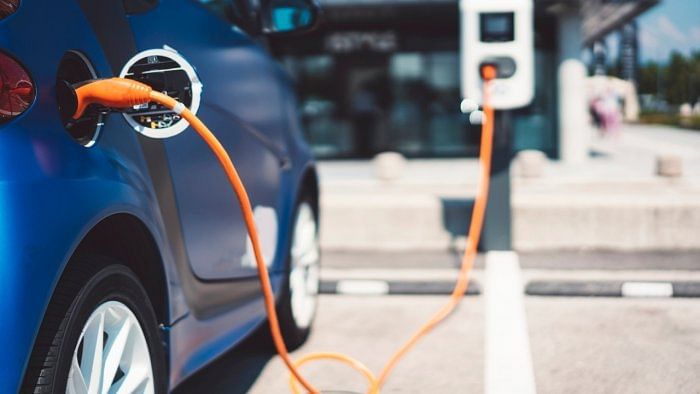
Representative image of EV.
Credit: iStock Photo
The reduced subsidy on electric vehicle (EV) batteries under the government’s Faster Adoption and Manufacturing of Electric Vehicles (FAME-2) scheme has trapped the makers of EVs in a Catch 22 situation. On one side it makes business sense to shrink the size of batteries to cut their cost, on the other hand, they are operating in a nascent market, ill-equipped with charging infrastructure or swapping facilities. This has sent most original equipment manufacturers (OEMs) into a tizzy trying to address the issue.
In June this year, the Ministry of Heavy Industries cut the subsidy it offered on EV batteries from Rs15,000 per kilowatt hour (KwH) capacity to Rs 10,000/KwH and capped this at 15% of the ex-factory value of the vehicle - a major climb down the 40% cap it was earlier offering. Predictably, EV sales took a beating as the move raised the cost of the vehicles. Now OEMs are at pains to find creative ways to rein in the cost for this price-sensitive market.
“When the government of India came up with the FAME subsidy, it was linked to the size of the battery. The bigger the battery, the more subsidy you will get, incentivising most OEMs to put in bigger batteries, ” said battery manufacturing company Log9’s co-founder and director Pankaj Sharma. Now, the lowered subsidy has sent these OEMs back to the drawing board to reevaluate the right size of battery for each vehicle, he added.
Only, given the charging infrastructure of the country the solution does not lie in simply shrinking the battery size to cut costs. Hyder Ali Khan, CEO of EV maker Godawari Electric Motors, pointed out that each battery has to be powered with buffer capacity to cover 20kms and cannot be completely discharged. Further, though a capacity to cover 30-40 kms a day is considered adequate for private use, customers driven by anxiety about the lack of charging stations are demanding more.
“As subsidies get rationalised, you will see products being rationalised as well to meet customer requirements. There is also the challenge of refuelling time, charging infrastructure and the upfront cost of batteries,” underscored Chetan Maini, co-founder and vice chairman at EV infrastructure services provider SUN Mobility.
Challenged by this, OEMs introducing smaller battery packs have to explore adding mileage to electric vehicles by reducing energy usage in different functions. “OEMs now have to fundamentally investigate what the energy losses are in their vehicle and then optimise those parameters. For instance, if you reduce the weight of a vehicle by 20 kgs, using carbon fibre materials or a lighter chassis, you can increase the battery’s range as the dead weight of the vehicle is removed. A lot of energy is also lost in the wiring or the motor’s heat generation,” Log9’s Sharma said.
OEMs are also adopting variant strategy to combat range anxiety, where customers can choose from multiple battery models with varying capacities based on their needs and expected usage, said Rahil Gupta, chief technology officer and co-founder of 2-wheeler EV manufacturer Hop Electric.
He added that countries like China and Japan have overbuilt capacity, leading to a favourable supply-demand dynamic. This is coupled with easing in raw material movement, factors that could stabilise battery costs going forward, which currently make up for 45% of the price of an EV. However, this process could take time to take shape, forcing OEMs to strategise on maintaining the momentum in EV adoption.
There are several other areas that OEMs will now look into, said Maini. They may introduce fixed batteries that are smaller in size and users will buy these vehicles keeping in mind that they can’t be used for all applications. Users could also indulge in opportunity charging through fast chargers, however, that comes with the risk of degrading the battery faster. Lastly, battery swapping could be adopted as a widespread practice to ensure users don’t have to worry about refuelling time, he added.